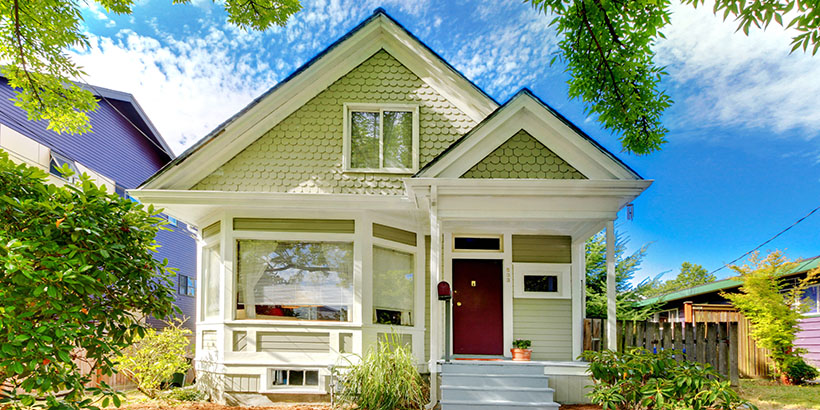There are two main types of mortgages — fixed-rate and adjustable-rate — that have been serving homebuyers for decades. Each mortgage comes with its own set of features and benefits that you should carefully consider before deciding which is best for you.

About Fixed-Rate Mortgages
A fixed-rate mortgage (FRM) is the most common type of mortgage, with 90% of buyers preferring it. With a fixed-rate mortgage, your interest rate remains the same for the life of the loan, no matter the length. This provides peace of mind for those who value the security of a fixed rate.
The benefit of the fixed–rate mortgage boils down to inflation protection:
- If mortgage rates increase, your rate will not change during your mortgage term.
- If mortgage rates drop significantly, you have the option to refinance, usually without penalty, to get a new loan that takes advantage of the lower rates.
Let’s Look at an Example
Let's say you lock in a 30-year fixed-rate mortgage at 6.5% and your mortgage payment is $1,200 per month.
With a fixed-rate mortgage, your payment will be the same in 12, 18 and 26 years, assuming you haven't tapped into your equity or refinanced your mortgage. No matter how high rates may rise over the next 30 years, your payment will always be based on your 6.5% rate. Keep in mind, however, that your taxes and insurance costs will likely increase.
About Adjustable-Rate Mortgages
An adjustable-rate mortgage (ARM) is much less common and works differently than a fixed-rate mortgage. With an adjustable-rate mortgage, the interest rate is fixed for a set period — from six months to 10 years — and then fluctuates up or down for the life of the loan.
Typically, the rate of an ARM will start off lower than a fixed-rate mortgage, but your monthly payments may increase over time and you will need to be financially prepared for the adjustments. Most ARMs do have a limit on how much the interest rate can go up or down within an adjustment period.
If you plan to sell your home in less than five years, or before the adjustment period of the loan, an ARM may make sense so you can take advantage of lower payments in the initial years of the mortgage. Be sure you know the details of how and when your payments may change and evaluate your options carefully. A lender can run the numbers for you based on your personal situation.
Let’s Look at an Example
Let's say you chose a 5/1 ARM and lock in with a 5.0% interest rate.
Your mortgage will stay the same for the first five years, and then it can change once a year for the remaining term of the loan.
If interest rates increase, your monthly payments will increase. If rates go down, your payment may go down, but that's not the case for all ARMs. Also, some ARMs set a cap on how high your interest rate can go and some limit how low your interest rate can go.
The Bottom Line
If you plan to stay in your home for 10 years or longer, consider a fixed-rate mortgage. If you plan to sell earlier, say within five years, an ARM may make more sense for you.
To determine the type of mortgage that's right for you, lean on your lender or financial professional for guidance.
Last reviewed: May 13, 2025
My Home in your inbox
Sign up to receive resources, tools and tips about buying, owning, refinancing, selling and renting a home in your inbox.